The Story Behind the British Rolls-Royce Armoured Car: A Military Marvel
By Rakhi Anand
3124 Views
The British Rolls-Royce Armoured Car was used during the First World War and in the early stages of the Second World War in the Middle East and North Africa.
The Rolls-Royce Armoured Car is a British armoured car which was developed in 1914.
Despite the early endeavours by Great Britain, by the year 1914, development of armoured cars had almost stopped in Great Britain. The first Rolls Royce Armoured Cars were created almost by accident.
Early Development
In August 1914, the Eastchurch Squadron of the RNAS (Royal Naval Air Service) were moving towards England by road. They were instructed to stay in Dunkirk as that would help them in spotting the enemy trying to invade the area. To supplement the lack of aircraft, two of the cars in the squadron were equipped with a Maxim machine-gun.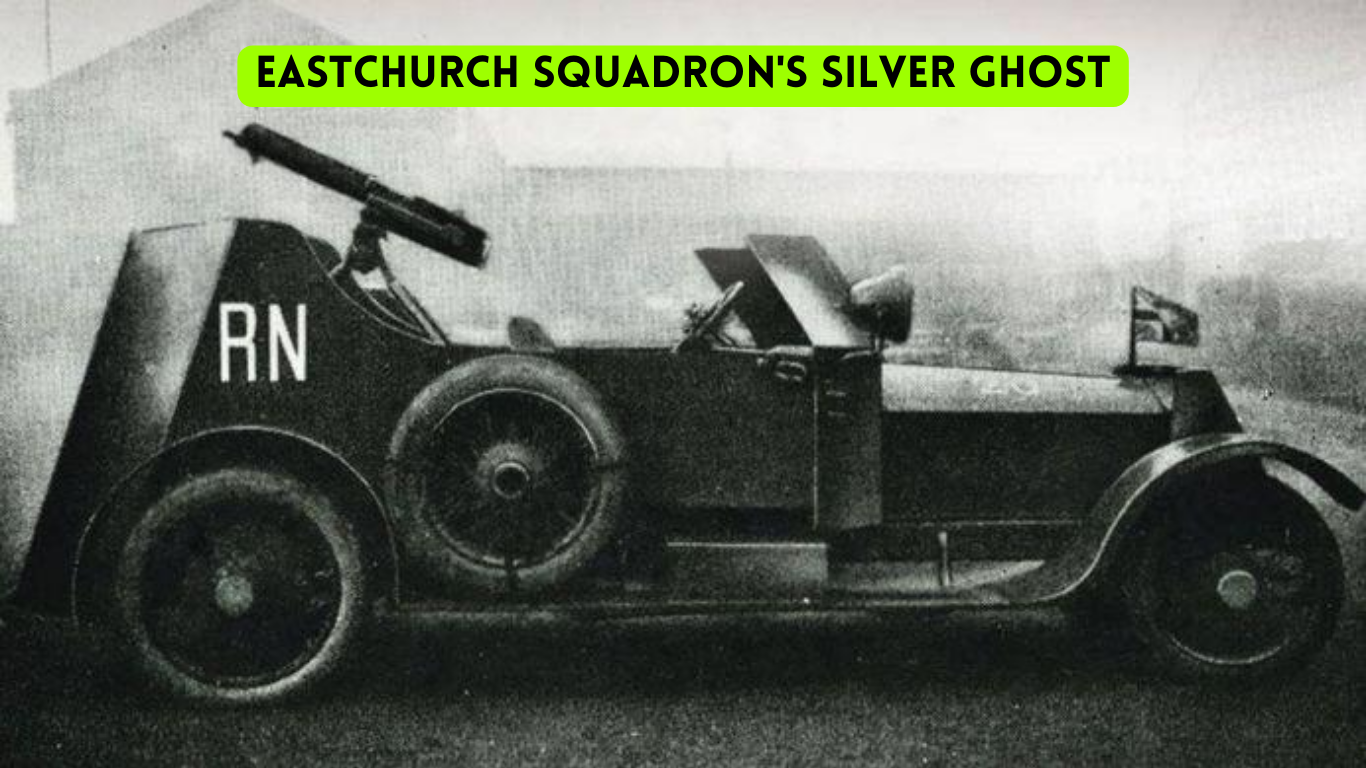
After a few sorties, where the cars left their position and went into enemy territory to attack, it was clear that the cars, though equipped with machine guns, provided little protection. To enhance protection, the cars were armoured with boiler plates, iron rolled in large, flat plates used in making steam boilers. The armoured cars were later used in coordination with other air-planes that spotted the enemy. The War Office was so impressed by the performance of these cars armoured with boiler plates, that in October they ordered all other Rolls Royce Silver Ghost chassis to be converted to armoured cars.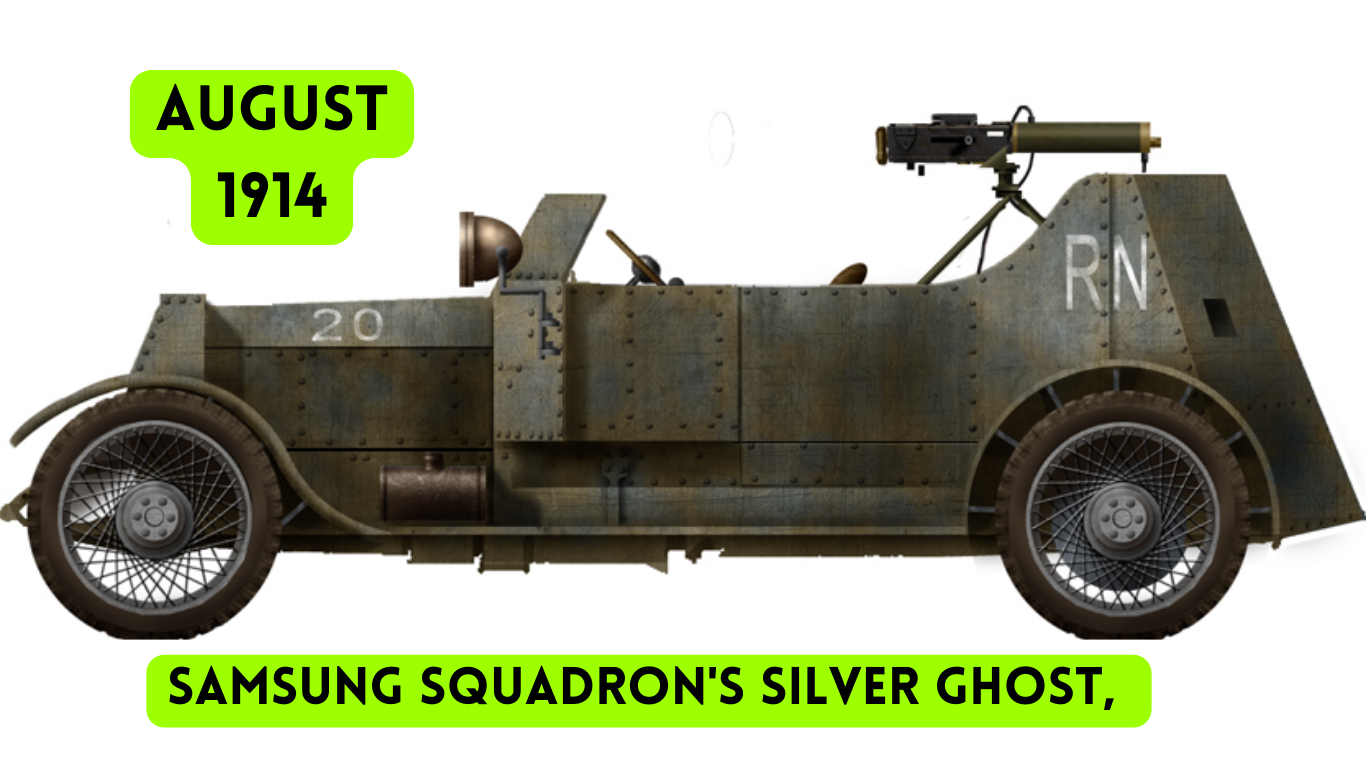
A committee headed by the Admiralty Air Department looked after the conversion. They set up the new tactical units and developed the Armored Car 1914 Pattern. These vehicles also gained a lot of fame during the Middle-Eastern campaign.
Design of the 1914 Mk.I Pattern
The Rolls Royce Silver Ghost, as a car, was not symbolic of a luxury as we know today. But the Rolls Royce cars were much costlier than other sedans and coupés of that time. They were equipped with a remarkable engine and the quality of material used to build the car was top-class. These premium features had given Rolls Royce the reputation of an elite car.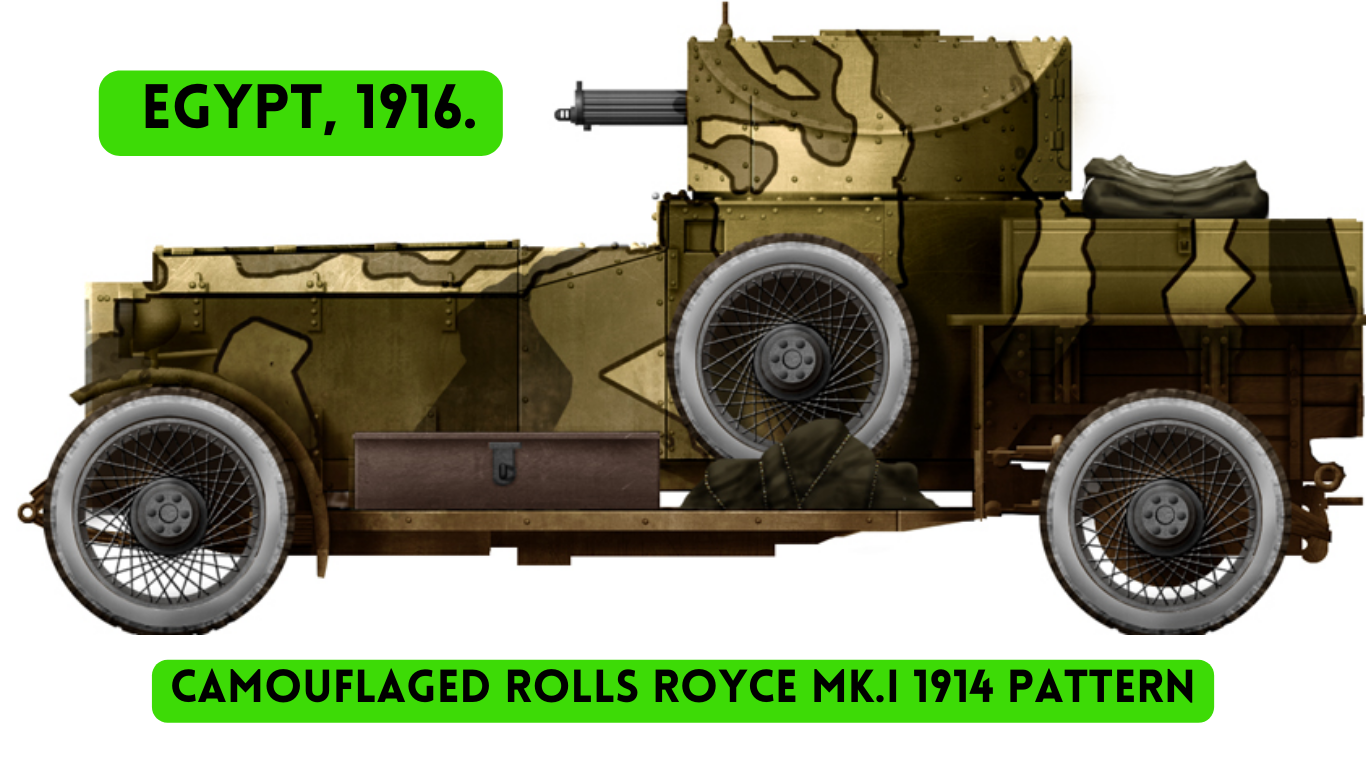
The 1914 Mk.I Pattern was powered by a 6-cylinder petrol, water-cooled engine. It generated 80 hp or a 19 hp per tonne weight ratio. The name of the early series comes from its all-silver finish.
The armour was made of 12 mm rolled steel plates, riveted around the chassis to a light frame. It housed a regular water cooled standard Vickers machine gun. The engine hood and radiator were completely armoured. The rear of the chassis had enough room for storage boxes and spare parts.
The credit for raising the first British armoured car squadron is given to the Royal Naval Air Service. The Squadron was raised during the First World War. In order to develop the foundation for the new armoured car, all the available chassis of Rolls-Royce Silver Ghost were requisitioned in September 1914.
The superstructure of the new car was designed in October 1914, by a special committee of the Admiralty Air Department. The superstructure was given an armoured bodywork. A fully rotating turret mounted a regular water-cooled Vickers machine gun.
On 3rd December 1914, the first three vehicles were delivered, but by then the mobile period on the Western Front had already come to an end. They served later in the war on the Middle Eastern Front. Chassis production was suspended in 1917 and Rolls-Royce was instructed to focus on aero-engines.
Upgrade:
The vehicle was upgraded in 1920 to Rolls-Royce 1920 Pattern and in 1924, to Rolls-Royce 1924 Pattern.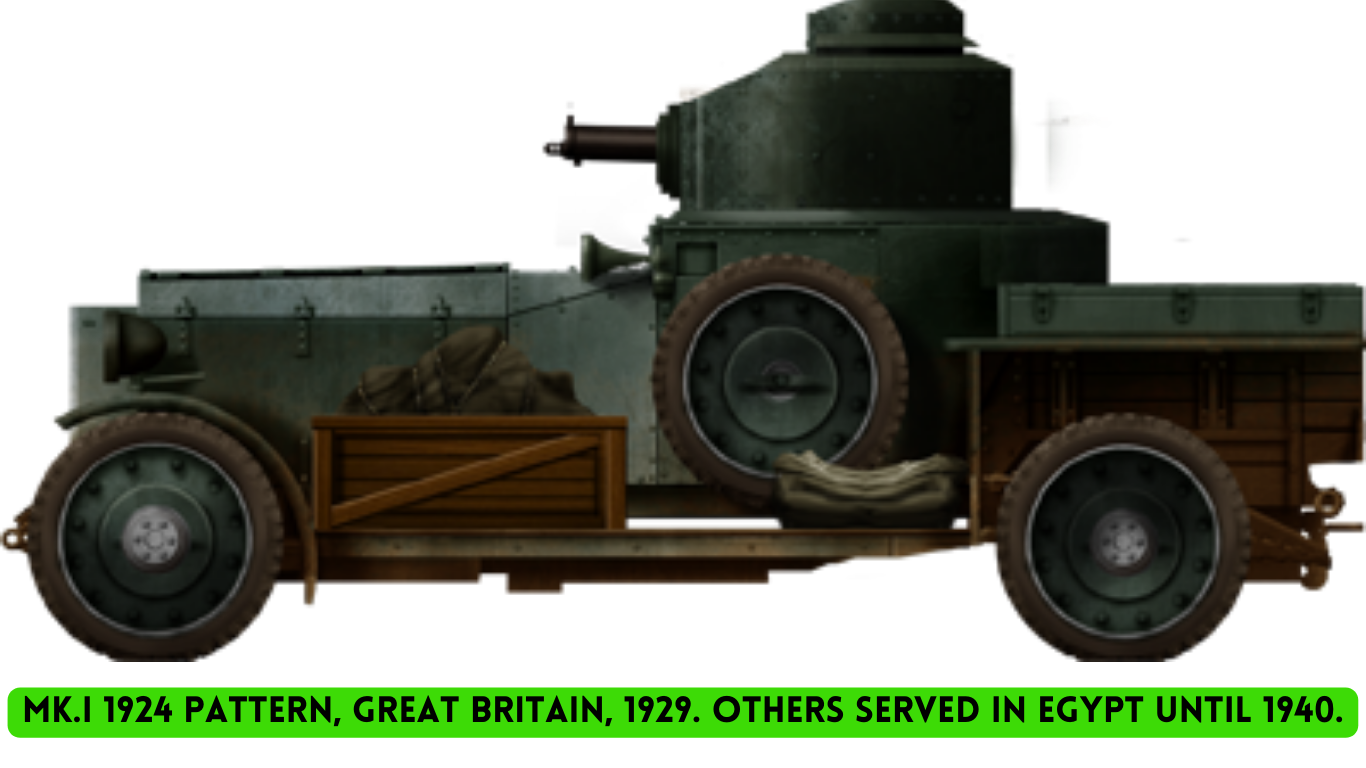
In 1940, 34 vehicles which had served in Egypt were upgraded. The old turret was replaced with an open-topped unit carrying a Boys anti-tank rifle, Bren light machine gun, and smoke-grenade launchers.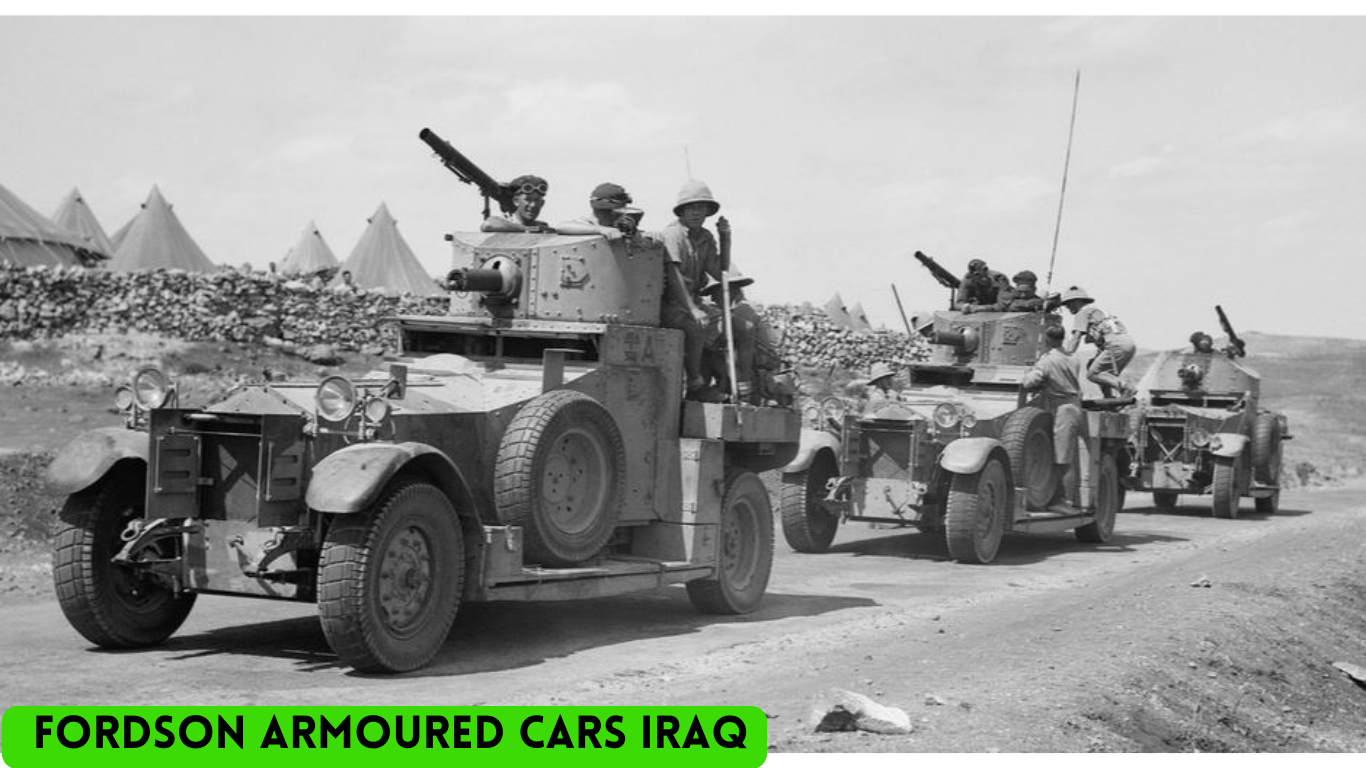
Twenty Rolls-Royce armoured cars that were in service in Egypt and Iraq were upgraded and were given a completely new chassis from a Fordson truck. They were renamed as Fordson Armoured Cars.
They were equipped with turrets fitted with a Boys anti-tank rifle, a machine gun and twin light machine guns for anti-aircraft defence.
Six RNAS Rolls-Royce squadrons were formed. There were 12 vehicles in every Squadron. Out of these Squadrons, one was sent to France. One was sent to Africa where they had to fight in the German Colonies. In April 1915 two of them were sent to Gallipoli.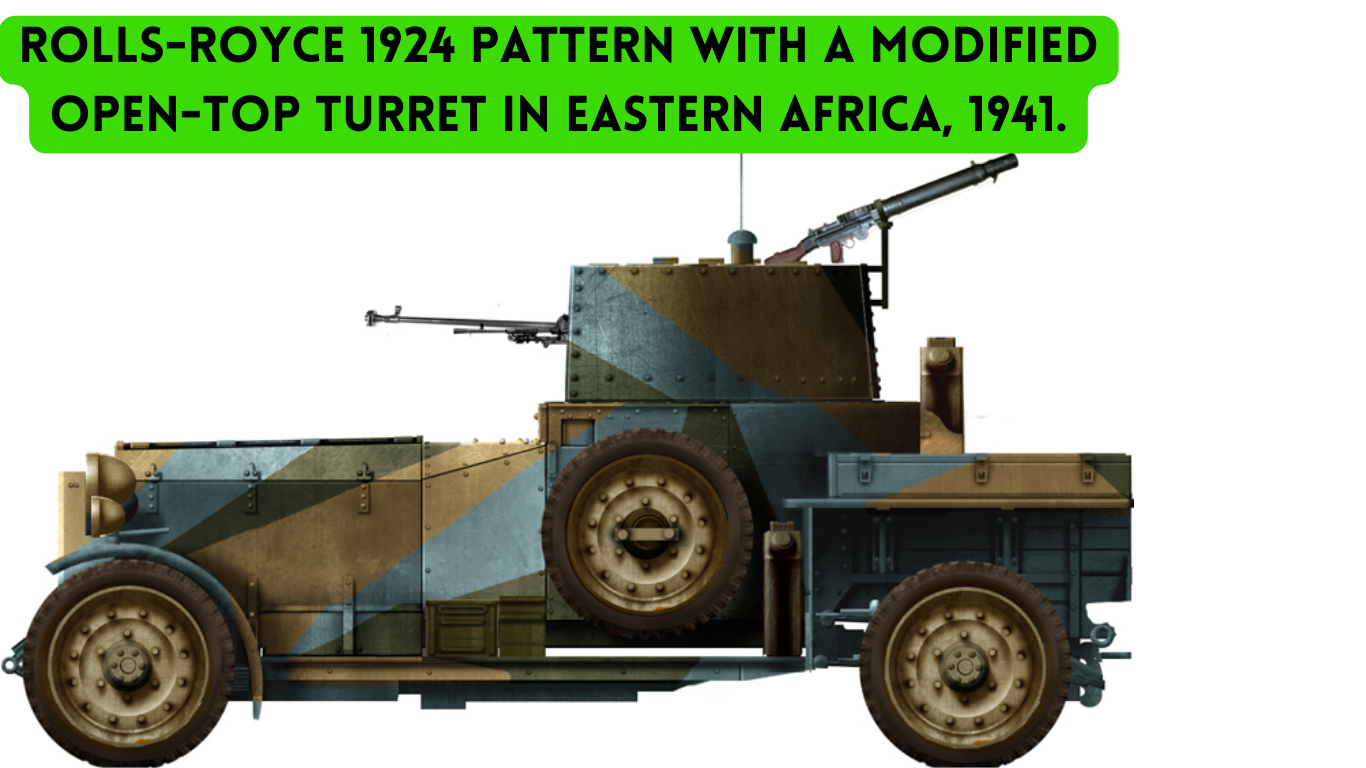
A few months later, in August 1915, the process of disbanding the cars was started. The materiel (weapons and equipment) was handed over to the Army. The Army used them in the Light Armoured Motor Batteries of the Machine Gun Corps.
The armoured cars were not suited for the battlefields of the Western Front which was filled with muddy trenches . But the vehicles were able to operate in the Near East. So, the squadron from France was moved to Egypt.
Lawrence of Arabia
A Squadron of vehicles was used by the Lawrence of Arabia during the operations against the Turkish forces. He referred to the unit of nine armoured Rolls-Royces "more valuable than rubies". He called his win his Revolt in the Desert and owed it to the Rolls Royce Armoured Car.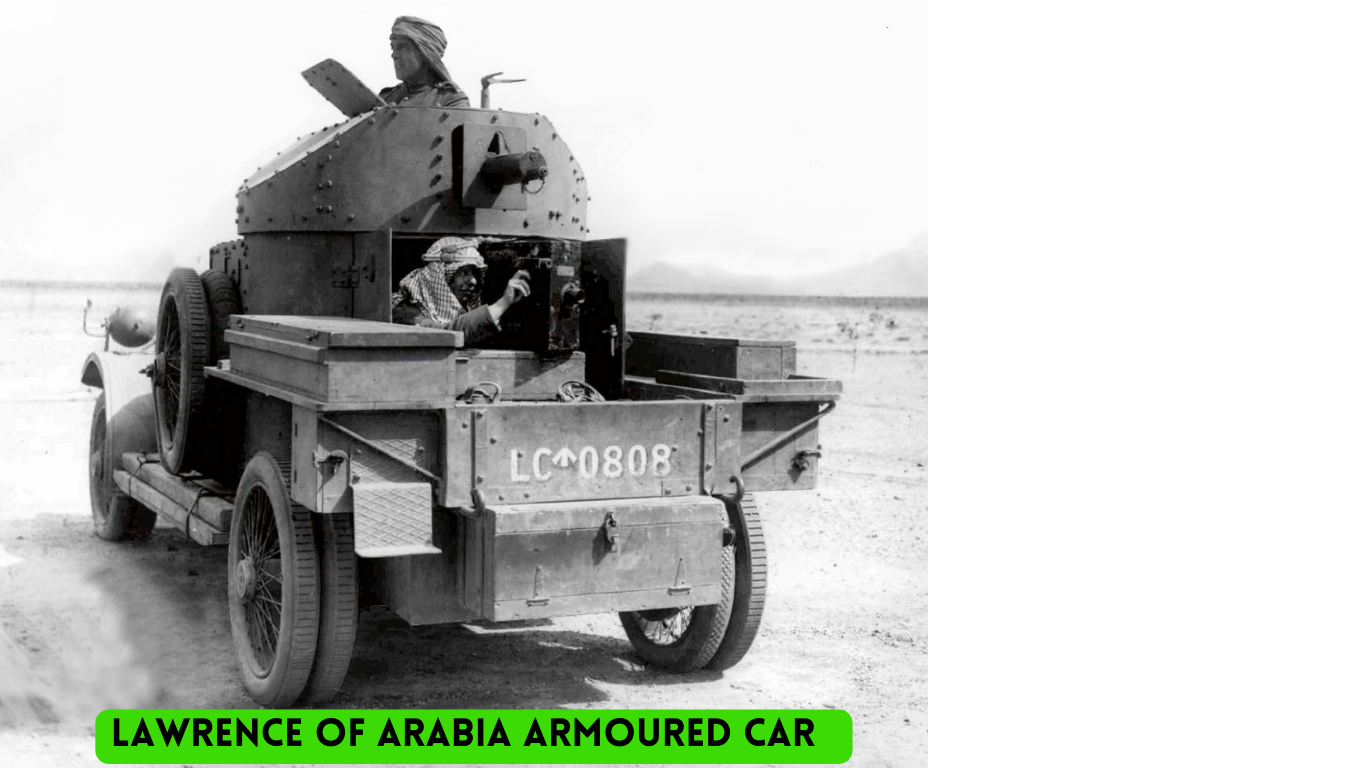
The impression of the car lasted with him for the rest of his life. When he was once asked by a journalist about the thing he valued the most in his life, he said "I should like my own Rolls-Royce car with enough tyres and petrol to last me all my life.
Modernization of the armoured cars followed after WWI. The upgraded models 1920, 1921 Indian and 1924 were in service during WWII in Africa.
Irish Civil War
During the Irish Civil War (1922–1923), the British government offered 13 Rolls-Royce armoured cars to the Irish Free State government so that they could fight the Irish Republican Army. These cars came as a great help for the Free State in street fighting and in protecting convoys against guerrilla attacks. These armoured cars played a vital role in the winning back of Cork and Waterford.
But with this car there were continued maintenance problems and the car had very poor reaction to Irish weather. Proper maintenance was provided to the cars and they continued in service until 1944.
Thereafter, the new tyres became unobtainable and the cars were withdrawn. Twelve of the cars of the Irish Army were stripped and sold in 1954.
The Second World War
The Second World War started in 1939. During that time, 76 vehicles were in service. During the operations in the Western Desert, Iraq, and Syria, these cars were used. By the end of 1941, modern designs available for armoured cars and these cars were removed from frontline service. Some Indian Pattern cars were used in the Indian subcontinent and Burma.
Variants of Rolls-Royce Armoured Cars
1920 Pattern Mk I – It had thicker radiator armour and new wheels.
1920 Pattern Mk IA – It had a commander's cupola.
1924 Pattern Mk I – There was a turret with a commander's cupola.
1921 Indian Pattern – It was based on the 1920 Pattern. The hull armour was extended to provide extra space. There was a domed turret with four ball mounts for the machine guns.
Fordson – It was based on the 1914 Pattern. Some vehicles in Egypt received new chassis from Fordson trucks and hence the name.
The turret was removed and replaced by a one-pounder automatic anti-aircraft gun on an open mounting in a single experimental vehicle.
On some cars Maxim machine guns were loaded instead of the Vickers gun.
General Michael Collins
The Irish Army decided to retain the 1920 Pattern Rolls-Royce . It is believed to be the car that was accompanying the Commander-in-Chief of the National Army, General Michael Collins, on the fateful day when he was killed. 
Michael Collins was an Irish revolutionary and soldier. He played a significant role in the early 20th century struggle for Irish independence. He was killed in an ambush that was laid by an anti-Treaty column during his visit to Cork City, on August 22, 1922.
Survivors
The 1920 Pattern Rolls-Royce is the oldest serving armoured vehicle of the world. It is one of the two original Rolls-Royce armoured cars which is running till date.
It is regularly aired during parades and open days, and is often driven under its own power. But the car has recently undergone a complete refurbishment. It was completely stripped down and rebuilt. The car is maintained by the Irish Defence Forces Cavalry Corps in the Curragh Camp.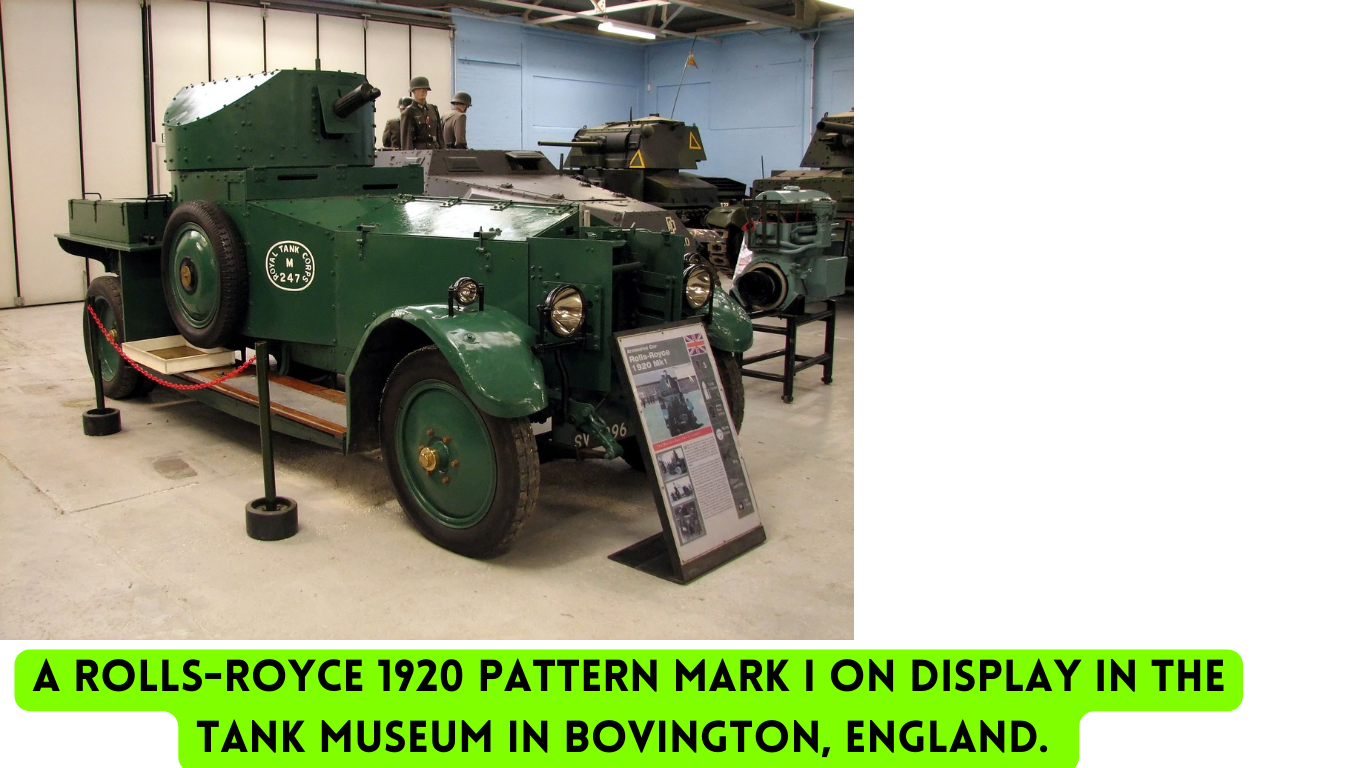
The Tank Museum in Bovington, England has on display a Rolls-Royce 1920 Pattern Mark I. The museum's inter-war years gallery has the vehicle on display. David Wiley, curator of the museum, called it one of the best exhibits they were privileged to showcase.
The RAF Regiment Heritage Centre, has a 1920 pattern Rolls-Royce armoured car which is on display at RAF Honington. Previously it had been on display at the RAF Museum at Hendon.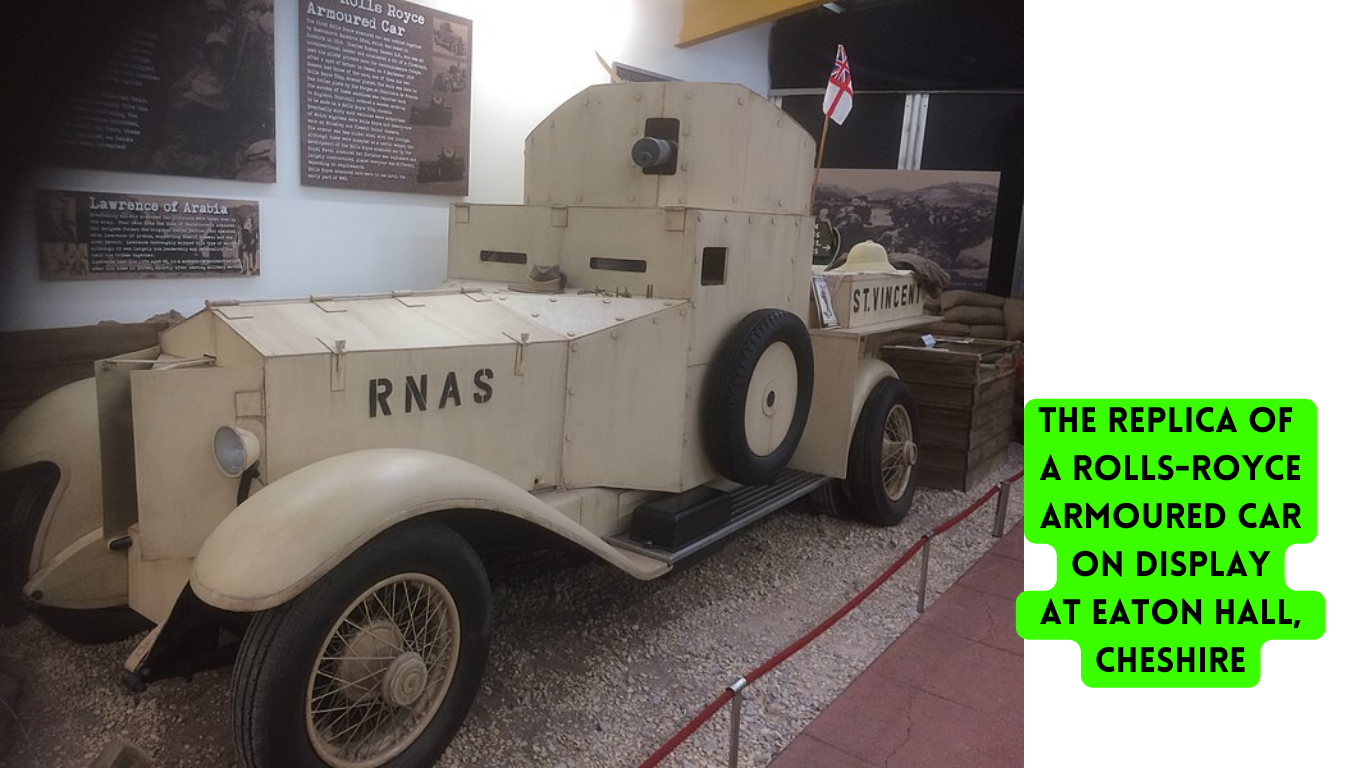
The replica of a Rolls-Royce armoured car is on display at Eaton Hall, Cheshire, home of the Duke of Westminster, and can be viewed at charity open days of the Hall.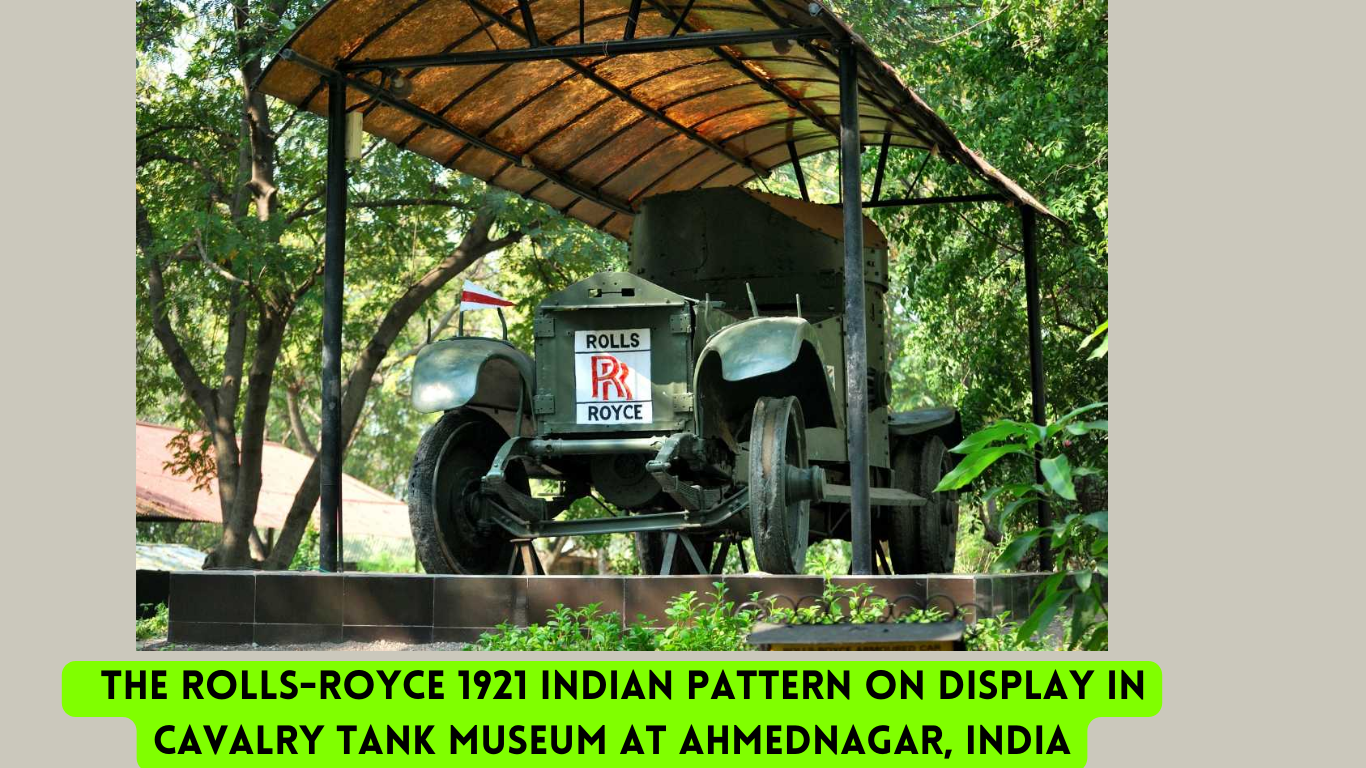
The Cavalry Tank Museum at Ahmednagar, India has the Rolls-Royce 1921 Indian Pattern. It is on display there.
The 1914 Rolls-Royce was given a replica bodywork, in order to make it resemble the Desert Rolls that accompanied Lawrence of Arabia. It is on display in the Haynes Motor Museum.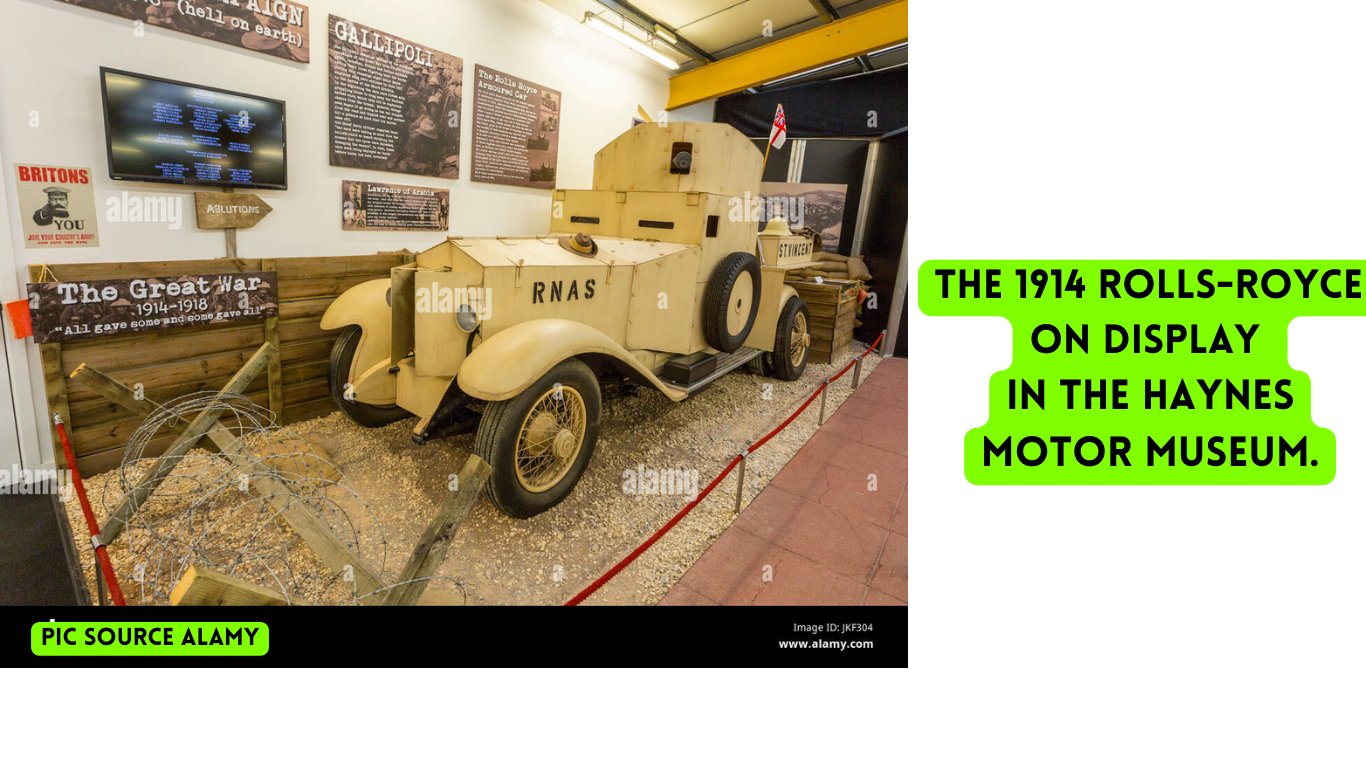
Through this article we have shared information about the British Rolls Royce Armoured Car developed in 1914 and used in the First World War and also in the early stages of the Second World War. Our article series ‘Evolution of Military Vehicles’, is our endeavour to bring out such unique and interesting stories from the Military Automotive World. To find out more about our latest stories, keep checking our website. In case of any query, feel free to contact us.